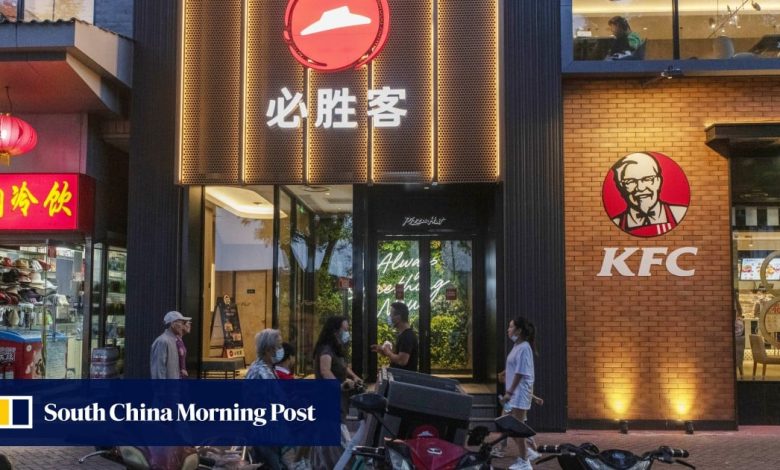Yum China, owner of KFC and Pizza Hut, beats estimates as low-price strategy draws diners

“Our sharp focus on value-for-money and innovative new products worked well, driving robust same-store transaction growth,” CEO Joey Wat said in a statement on Tuesday. “We took proactive actions to improve operational efficiency, stabilising restaurant margin and expanding operating margin year over year.”
In the second quarter, the world’s second-largest economy expanded by 4.7 per cent from a year earlier, but this was lower than the 5.08 per cent growth predicted by Chinese financial data provider Wind and the 5.3 per cent growth seen in the first quarter.
In June, retail sales rose by 2 per cent on year, compared with 3.7 per cent growth seen in May, the slowest pace since China lifted its coronavirus restrictions.
Yum China spearheaded the move among the country’s top restaurant chain operators to adjust their pricing strategies in the first quarter of 2024 to pursue growth amid an overall weak consumer market. As a result, transactions rose as new affordable products appealed to more customers across the country.
Between April and June, Yum China saw a year-on-year jump of 13 per cent in transactions. Same-store sales, however, dropped 4 per cent in the same period.
“As consumers, particularly those middle- and low-income wage earners, are more cautious on spending, discounts and promotions are necessarily needed by leading brands like KFC and Pizza Hut to spur sales growth,” said Chen Xiao, CEO of Shanghai Yacheng Culture, a marketing and branding company. “Once the big-name chain operators offer attractive prices and products to lure budget-conscious consumers away from smaller rivals, they will gain market share but face squeezed profit margins.”
In the second quarter, KFC’s restaurant margin fell 0.6 percentage points year on year to 16.2 per cent because of discounts and wage inflation, Yum China said.
Pizza Hut said its restaurant margin rose 1.1 percentage points year on year to 13.2 per cent, as higher operational efficiency offset the impact of increased value-for-money offerings and a rise in salaries.
Yum China said its total store count reached 15,423 at the end of June, with 401 outlets added during the second quarter.



 Free spins for beginners
Free spins for beginners